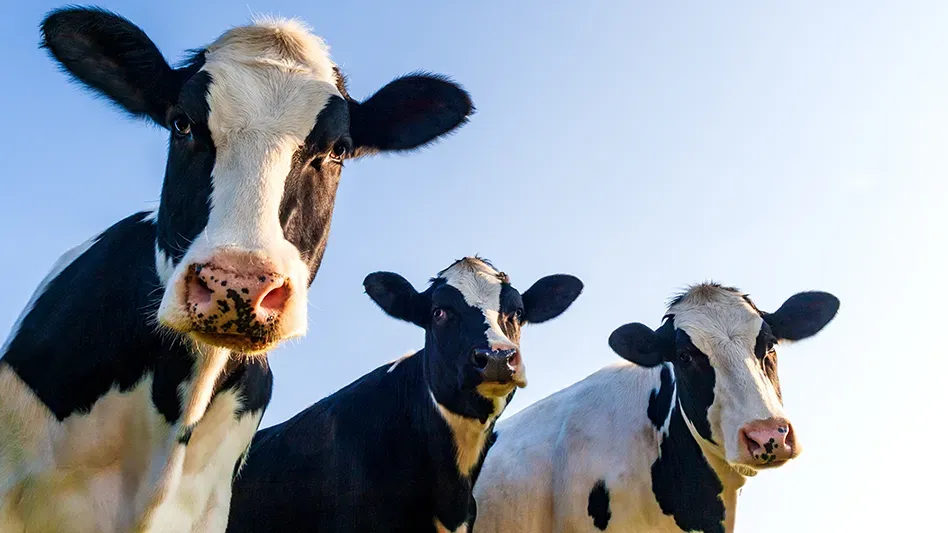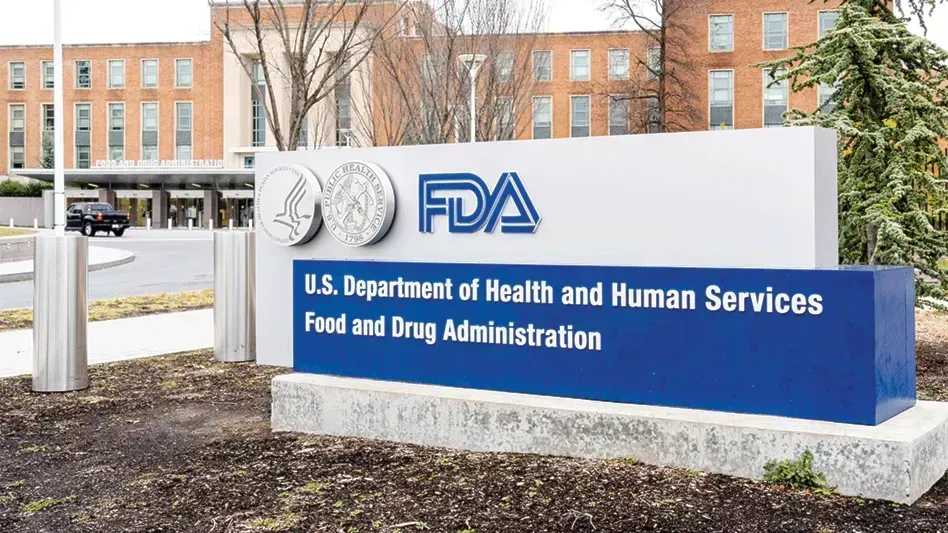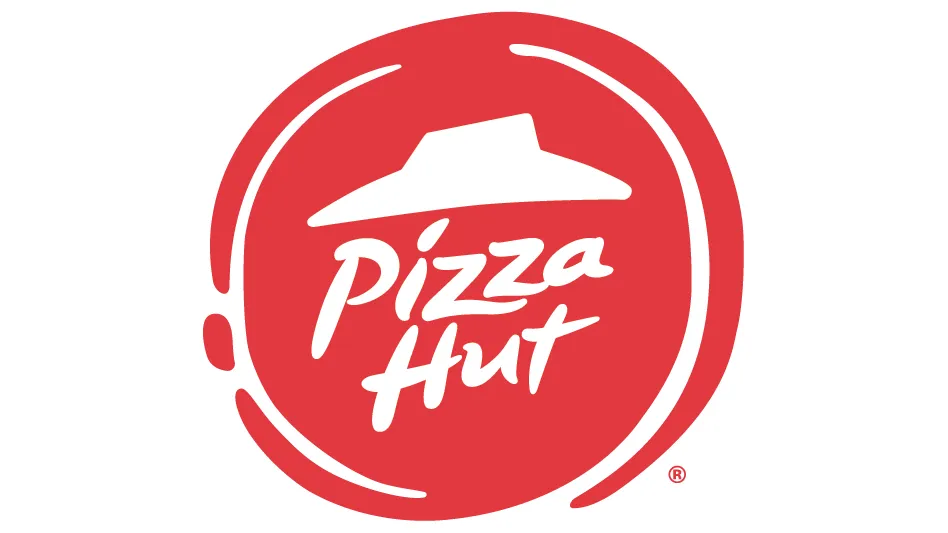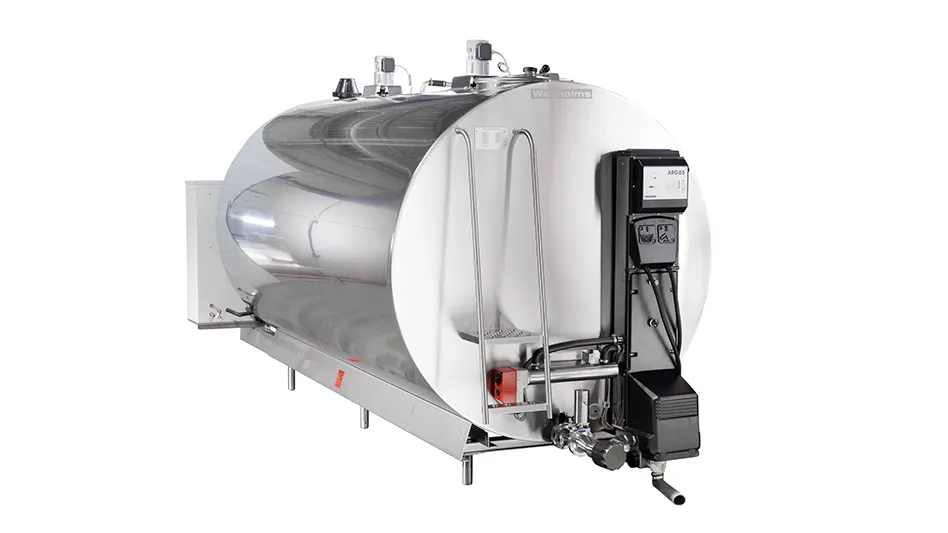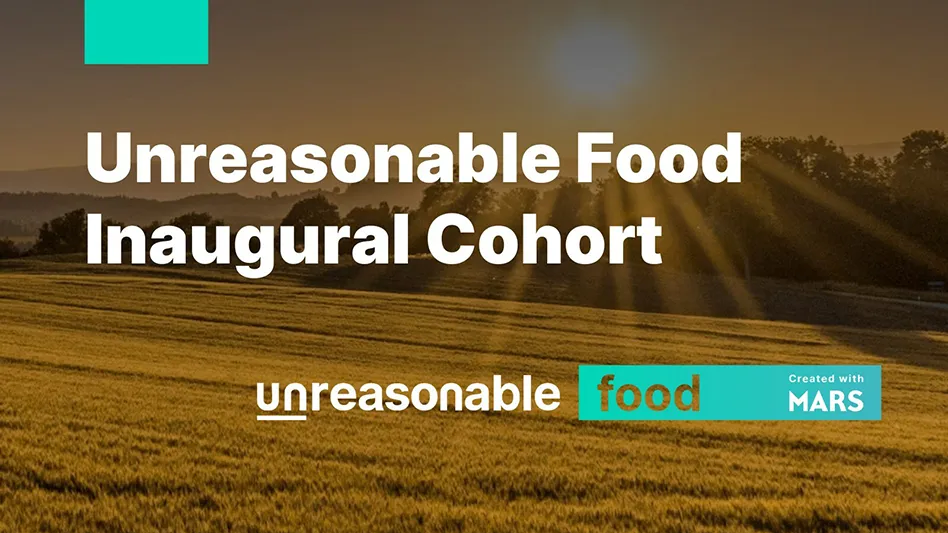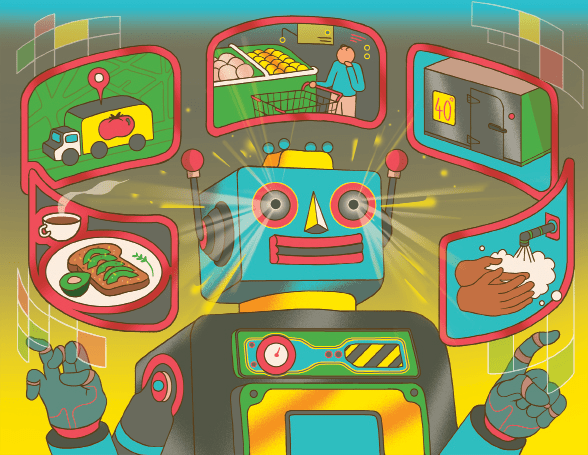
Blockchain and AI and IoT, oh my.
If the wave of new technologies in the food industry make you feel like a lion searching for courage, you’re not alone.
“The food industry is kind of technology averse,” Dr. David Acheson, CEO of The Acheson Group, told Quality Assurance & Food Safety magazine in December 2020. “They don’t embrace new technology.”
But leveraging these tools, such as using blockchain for tracebacks or Internet of Things (IoT) devices to monitor a facility in real time, can have implications for several parts of the food industry. It’s also important to understand that tech isn’t coming to replace you or all of your processes.
“Some people want to see that technology is the solution,” said Bryan Hitchcock, executive director of the Global Food Traceability Center at the Institute of Food Technologists (IFT). “Technology to me is an enabler.”
Hitchcock, as well as Kevin Otto, senior director, community engagement at GS1 US, walk us through some of the more recent technologies, where they stand now and more.
Artificial Intelligence (AI).
For a certain generation, the phrase AI might trigger nightmares of Skynet, the main antagonist from the “Terminator” franchise.
But AI and machine learning are already all around us. If you use Amazon’s Alexa, you’re using AI. Using Google’s image search? AI. So it’s probably not a stretch to expect it to become even more ingrained in the food industry sooner rather than later.
One of its biggest impacts could be novel interpretations of data sets.
“As humans with Excel files, we struggle to actually interpret that,” Hitchcock said. “So being able to train computers to evaluate data and identify non-obvious trends and predict things rather than react to things [could be good].”
For example, in Europe, there have been studies where microbial data was collected from plants to build predictive models around when there may be periods of risk on the horizon. AI is already in use in the agriculture space, using analytics to look at one localized section of a field and assess what to plant, where to plant it and how much water and fertilizer to use.
“It’s no longer, here are acres of fields and it all gets the same amounts,” Hitchcock said. “Now, let’s get it down to your smaller subsets.”
“Some people want to see that technology is the solution. Technology to me is an enabler.” Bryan Hitchcock, executive director of the Global Food Traceability Center at the Institute of Food Technologists
When it comes to supply chain optimization, AI can help predict the best time to ship products, particularly when it comes to imports and exports.
“There’s variables that are well beyond people’s control that they need to account for,” Hitchcock said.
Where AI can get really fun is in other capabilities such as using data to predict consumer trends or develop products. Hitchcock cited cases where flavor ingredient companies built models around AI and human sensing capabilities to optimize a flavor profile beyond what a human can do.
“It’s really hard to understand and get consumers to articulate what they really want,” Hitchcock said. “If you can build models and get unarticulated data and then be able to interpret that, I think there’s opportunity spaces there.”
While that might cause some tension between the idea of culinary-inspired and engineered, optimized versions of food, in some ways it’s two routes to one outcome.
“There is space for both to coexist and enable each other,” Hitchcock said. “Building capabilities to leverage the strengths of both the creative and data-driven tools can deliver amazing outcomes.”
What’s important with all of these applications is the quality of the data coming in.
“The data that you source and that you train the models around is absolutely critical to getting a usable answer out,” Hitchcock said. “Because [otherwise], it’s the age-old garbage in, garbage out type of scenario.”
Blockchain.
We’ve all seen the examples of blockchain providing traceability and transparency. For example, if a manufacturer buys tomatoes from a farmer and uses it to make salsa, having lot codes associated with specific ingredients (and if the farmer, manufacturer and distributor are using the same standards) means being able to use blockchain to home in on specific jars of salsa in case of a recall of those tomatoes.
While the food industry has had that capability through paper and non-blockchain electronic records, the technology should help it happen faster.
“In a blockchain environment where you’re sharing this information openly, a restaurant operator can know, with the push of a button, if they have product in their supply chain that has been impacted by a recall,” said Otto.
But blockchain has potential elsewhere. It can be used to keep track of inventory freshness, which helps with quality and safety, and also helps with cutting down on food waste.
“The data that you source and that you train the models around is absolutely critical.” Bryan Hitchcock, executive director of the Global Food Traceability Center at the Institute of Food Technologists
“A lot of people look at the recall as just kind of an insurance policy, so you’re not necessarily going to save a ton of money in that space,” Otto said. “But where you can talk about things like cycling your inventory, that’s where there are some ROI at the end of the line. I think those are the next-level use cases.”
As far as challenges for the technology, Otto said the industry is likely still struggling with how much transparency is a good thing. He cited an example from a cattle farmer who Otto sat on an event panel with. The farmer wanted to be transparent, but he told the audience that he didn’t need everybody in the supply chain, such as the end consumer, to have that information because there could be protestors or another negative impact to sharing that information.
“I hadn’t thought about that specifically,” Otto said. “That’s the challenge that the industry is really grappling with — how much transparency is appropriate to maintain food safety and to deliver the consumer the message that ‘This is an authentic item.’ ”
Internet of Things (IoT).
With both blockchain and AI, the mileage you get out of them is only as good as the data you input.
“Ultimately, the IoT sensors in my mind are data collection devices,” Hitchcock said.
These sensors, which could include thermometers, tracking devices, timers, cameras and more, allow food manufacturers to keep tabs on several plant processes.
“In the food safety space, what are the times and temperatures and flows of materials?” Hitchcock asked. “Which employees are in various different areas? The proliferation or the access to these relatively low-cost, high-capability sensors is only going to increase our capability to gather data and do something with it.”
In transportation, you can use data loggers to measure time, temperature and humidity inside trucks carrying perishables. Knowing those facts make it so that you don’t have to take someone at their word that the truck’s refrigeration was on the entire time.
“You bring some more veracity and continuity to some of those data points,” Hitchcock said, “which then enables decision making capability.”
But, Hitchcock cautioned, as companies invest in more online sensors, it’s important to consider your own infrastructure to support them. Many manufacturing facilities might not be setup with that level of technology, such as adequate Wi-Fi or Bluetooth capabilities. After all, cinderblock walls aren’t entirely conducive to connectivity.
“They’re really having to think about what’s their available bandwidth and how do they go about setting up the infrastructure to enable all this IoT,” he said. “They see the benefit, but then they see the transformation that’s going to need to happen to bring it to life.”
Other Technologies.
If you’ve played virtual reality (VR) games such as “Beat Saber,” or your first experience with augmented reality was “Pokemon Go,” you know how cool this tech can be. But VR and AR aren’t just for fun and games anymore.
Partially accelerated by the pandemic, these reality-bending technologies are on the cusp of changing the way the food industry can do a number of things, such as remote auditing. This can provide a savings on travel time. VR and AR are likely on their way to a food facility near you.
“There’s certainly interest and momentum there,” Hitchcock said. “We’ll see how it evolves.”
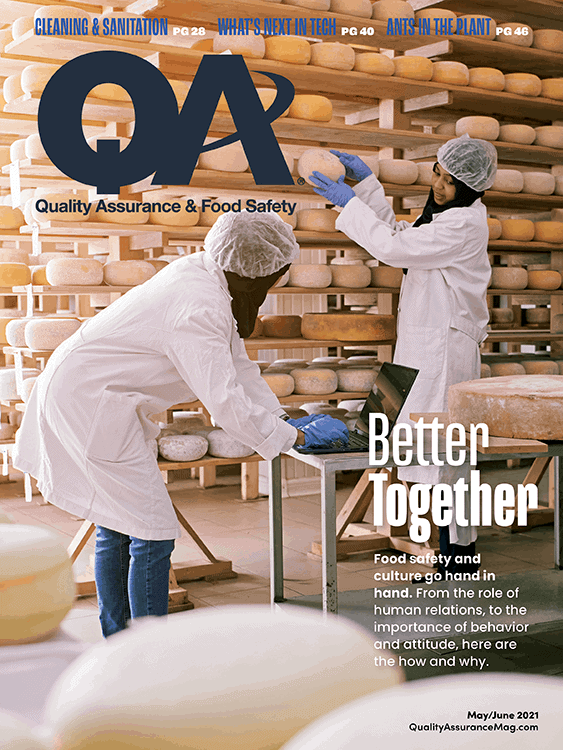
Explore the May June 2021 Issue
Check out more from this issue and find you next story to read.
Latest from Quality Assurance & Food Safety
- FDA Publishes Landmark Final Rule to Enhance the Safety of Agricultural Water
- The Wendy's Company Reports 2023 Corporate Responsibility Progress
- Local Bounti Opens New Controlled Environment Agriculture Facility
- Tröegs Partners with Patagonia Provisions to Introduce Kernza Lager
- Neogen Launches New Molecular Method for Detection of Two Salmonella Serotypes
- Standard Meat Company Appoints Keith Blanks as Chief Commercial Officer
- USDA Finalizes Policy to Protect Consumers from Salmonella in Raw Breaded Stuffed Chicken Products
- Comedian Vanessa Bayer Explores the World of Dairy Farming in ‘Dairy Diaries’
